QuestionI got an 8 month old lovebird a few days ago. The women I bought him from said he was hatch in her home. So, I thought he would be tamed. But he is not he will not come to my hand and when I put my finger out he bites me and he bites my lips when I ask for a kiss. What can I do. He is still a very young bird so I wonder if there is hope.
Answerhi. thanks for your question. this is a very very common question that i have answered before so i am going to give you an excerpt from another answer i provided to someone in your similar situation (the behavior you are describing is very common):
the behavior that you are describing sounds very normal for a newly acquired bird in a new situation. new birds in new environments are basically terrified. they are in a new cage with a new owner and are very wary of their surroundings. even a 'tame' bird will show caution when in a new environment with a new owner no matter how calm and behaved they were in their prior environment. thus, it will require patience and time and your part before she is comfortable enough to be handled. considering you have only had her several days, you will need to be patient with the process.
Birds that are handraised by humans are generally used to handling, care, and the company of humans. However, this isn't a sure thing...I've seen many a handraised bird be a "bad apple" and I've also seen parent raised birds become tame just fine.
You will have to spend time getting your new bird "used" to you and her new environment. Perhaps spending about 10-15 minutes, spread out over a few times a day (to keep her from being tired or overly stressed) at first. Remember throughout the process to use positive reinforcement...have her repeat what she did a few times and then use verbal praise and treats.
At first, as you have noticed, she will be timid. When she 'cries' for your attention, you may simply want to consider just sitting next to the cage and being in her area....you could just sit next the cage...perhaps put it next to you while you watch TV, read, pay bills...occasionally acknowledging her by looking at her and saying her name in a calm voice. That will help her to understand that when you say her name that you are speaking to her. Hopefully she will then look at you when you call her name, sort of like how dogs do. She should then start looking forward to your attention. Once this happens...it should be okay to start hand training her. All birds move at their own pace and there isn't really a "timeline" for when a bird is ready for hand training.
You may want to initiate training by tempting her with food...whatever she likes, like millet. Try this "handfeeding" until she is used to the idea of having your hand in her cage. This step could take a while and that is okay. it will help her also to not be scared of you when you are simply trying to change her food/water.
Keep doing this until she lets you pet her...try petting her chest/breast area first because your hand going for her head may scare her. Also, most birds don't like being pet on the wings or legs. When she gets used to you touching her in that area (which may also take some time, remember, baby steps) you can try pressing on her tummy a little bit as a cue for her to step up onto her finger. Birds usually like stepping up and being higher than they are so make sure your hand is placed up higher than her feet. Sometimes birds will automatically place on foot up...another gentle push will cue her to step up again! This may take time and also may result in her jumping off or being scared. She might also try and bite at this time. It may be a "test bite" as she is testing to see with her beak if your finger is a solid enough place for her to stand...not really a bite at all but more like her way of checking things out. She may also bite out of fear. Either way, when you are successful or if she bites, try not to make too much noise...even if its praise. Continue to speak softly and make slow movements, even if she bites. I know its hard but if she knows she can keep you away from her by biting, she will continue to do that.
As you start getting her to step on your finger, still keep her in the cage, just on your finger. Try not to pull her out of the cage quickly. Eventually, after a few times on your finger, you can slowly take her out of the cage. She may get scared and jump or fly back in the first few times. If she gets too scared and starts flying around the room, remain calm when you pick her up...she should jump right on to your finger out of fear of being out of her cage.
I hope this helps...just remember to remain calm and keep distractions to a minimum as she will be very shy at first. Make sure that there aren't hazards in the room you are doing your training in in case she does fly around the room disoriented. birds can be easily injured or killed and the risks of trauma, drowning, burning, poisoning, etc. is high in most homes.
speaking of flying, you may want to consider having a veterinarian or another qualified professional trim her wings. not only does this keep her safe (reduces the risk of her being injured while flying) but may serve to help your taming process. when she realizes she cannot fly, she will rely on you to pick her up off of the floor and is less likely to try and "escape" from your hand.
With time and effort, she will trust you to handle her and you can begin understanding how to further bond with her. please give her a chance and try not to get discouraged. there is always hope for a bird...i have seen birds in their teens and twenties be "tamed" eventually with the right person! I hope this helps and I am glad that I have been able to help you so much! Good luck and let me know how it goes. Alicia

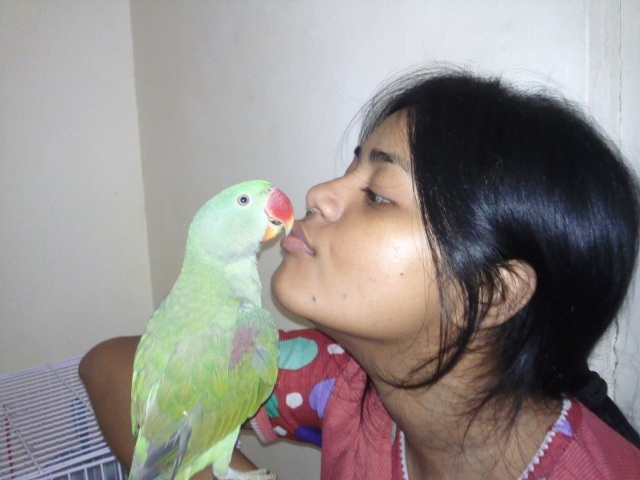 can i give my parrot chole(chana) called in hindi
Question
my little chaddi alexa
dear sir,
can give chan
can i give my parrot chole(chana) called in hindi
Question
my little chaddi alexa
dear sir,
can give chan
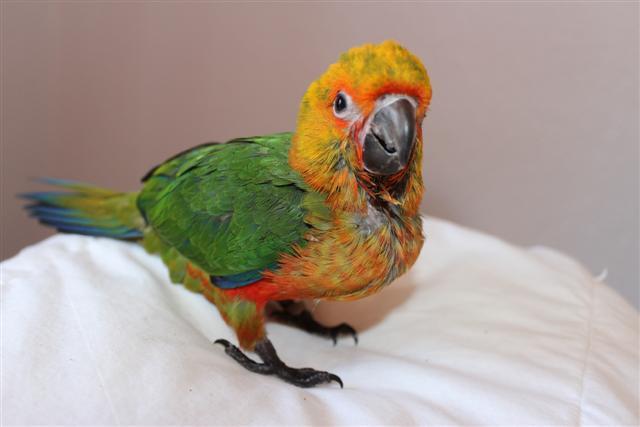 Jenday Conure Weaning?
Question
Castor the Conure
Hi
I have a 9 week o
Jenday Conure Weaning?
Question
Castor the Conure
Hi
I have a 9 week o
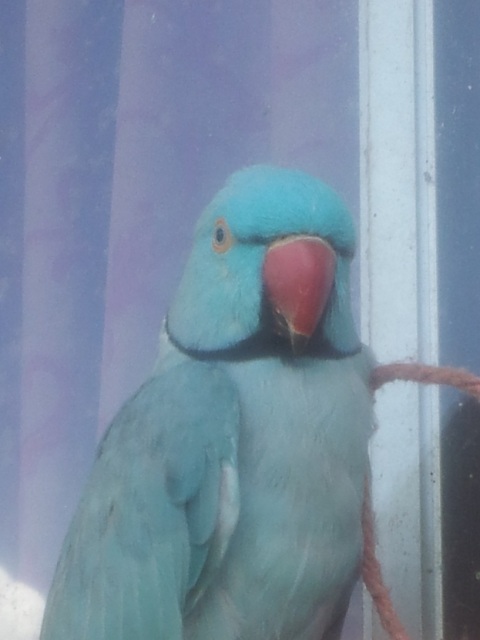 RE: Indian Ringneck probems
Question
Indy our Ringneck
Thank you for your he
RE: Indian Ringneck probems
Question
Indy our Ringneck
Thank you for your he
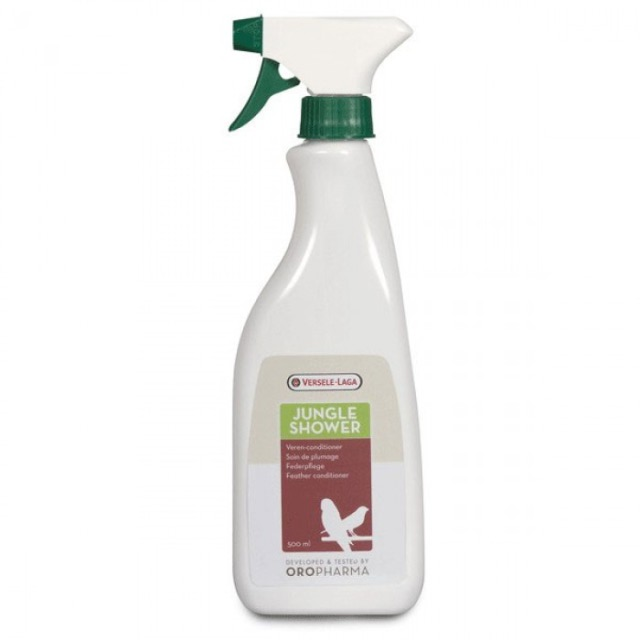 Indian Ringneck Health Issue
QuestionI have an Indian Ringneck who had been neglecte
Indian Ringneck Health Issue
QuestionI have an Indian Ringneck who had been neglecte
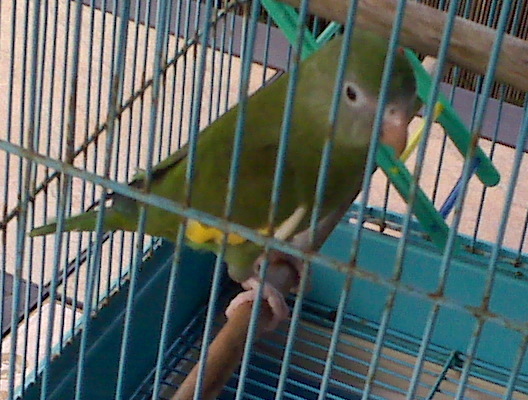 What type of parrot is this?
Question
Friendly bird
A week ago ths small parrot flew
What type of parrot is this?
Question
Friendly bird
A week ago ths small parrot flew